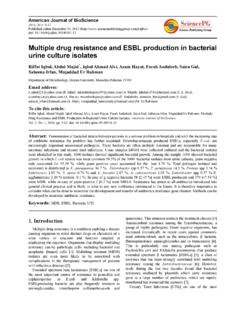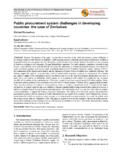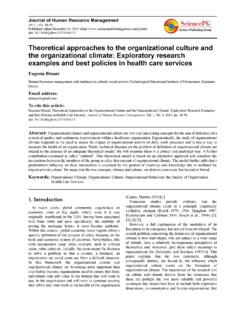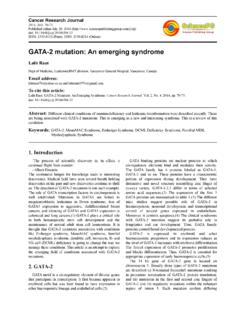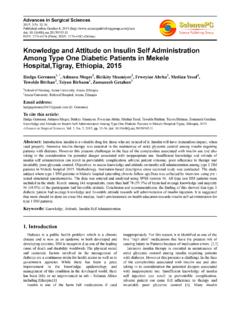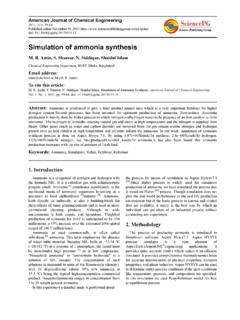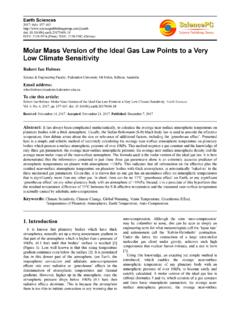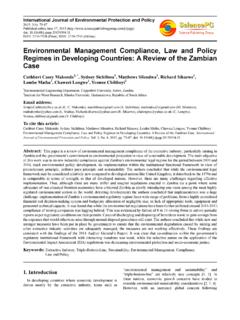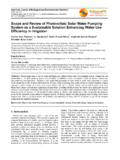Transcription of Seroprevalence and Risk Factors of Sexually …
1 American Journal of Health Research 2017; 5(5): 154-161 doi: ISSN: 2330-8788 (Print); ISSN: 2330-8796 (Online) Seroprevalence and Risk Factors of Sexually Transmitted Infections (HIV, HBV and Syphilis) Among Pregnant Women Provided Health Care Services, Addis Ababa, Ethiopia Kinfe Fissehatsion1, *, Ibrahim Ali2, Ashebir Getachew3 1 Department of Laboratory, Addis Ababa City Administration Health Bureau, Gandhi Memorial Hospital, Addis Ababa, Ethiopia 2 Department of Medical Laboratory Sciences, School of Allied Health Sciences, College of Health Sciences, Addis Ababa University, Addis Ababa, Ethiopia 3 Department of Obstetrics and Gynecology, Addis Ababa City Administration Health Bureau, Ghandi Memorial Hospital and Ethiopian Society of Obstetrics and Gynecology, Addis Ababa, Ethiopia Email address: (K.)
2 Fissehatsion), (I. Ali), (A. Getachew) *Corresponding author To cite this article: Kinfe Fissehatsion, Ibrahim Ali, Ashebir Getachew. Seroprevalence and Risk Factors of Sexually Transmitted Infections (HIV, HBV and Syphilis) Among Pregnant Women Provided Health Care Services, Addis Ababa, Ethiopia. American Journal of Health Research. Vol. 5, No. 5, 2017, pp. 154-161. doi: Received: August 30, 2017; Accepted: September 13, 2017; Published: October 13, 2017 Abstract: Globally the burden of HIV, HBV and Syphilis infections are common problem of pregnant women where its complication isn t only restricted to the pregnant women rather they are a serious issue for their newborn infants. Compared to developed country, developing countries including Ethiopia have been seriously influenced by such kinds of infections.
3 Therefore this study have designed to determine the sero-prevalence and identify the possible risk Factors of HIV, HBV and Syphilis infections in pregnant women providing health care services at Gandhi Memorial Hospital Addis Ababa, Ethiopia from January to April 2014. A Cross sectional study design has used and data on socio-demographic characteristics and possible risk Factors have collected through pre-tested and structured questionnaire. After that blood have collected and screened for hepatitis B surface antigen using rapid cassette device and the final positive sample for HBsAg have confirmed by enzyme linked immunosorbent assay (ELISA). Antibodies to HIV-1/2 have tested based on the national testing algorism and Trepollema pallidum antibodies have tested by using Syphilis Rapid Test Strip (Quick Test Syphilis Serum/ Plasma/Whole Blood Strip).
4 After the data have entered to Epi Info version and exported to SPSS version 16 for validation and analysis, the overall prevalence of HIV-1/2 and HBsAg was , 5% respectively while co-infection of HIV-HBV was but no cases of Syphilis detected positive. In relation to the risk Factors ; history of sex with multiple sexual partners, pre-exposure to STI and low level of monthly income were significant risk Factors for both HBV and HIV, while each infection found to have additional different risk Factors ; these includes: receiving of blood through donation, ear piercing and history of abortion for HBV infection while sharing different sharp materials and contact history with infected person for HIV infection alone.
5 Therefore; intensified prevention activities in antenatal care targeting this population will have vital impact in halting the spread of the infections. Keywords: HIV, HBsAg, Syphilis, Sero-prevalence, Risk Factors , Pregnant Women 1. Introduction Currently Sexually transmitted infections like HIV, HBV and syphilis have continued to be a public health problem in both developed and developing countries that causes acute illness, infertility, long-term disability and death, with severe medical and psychological consequences for millions of women and infants. There is tangible scientific evidence that a person with an untreated Sexually transmitted infections (STIs), particularly involving ulcers or discharge, is at increased risk of passing on or acquiring either of this infections during sex due to the presence of broken skin or American Journal of Health Research 2017; 5(5): 154-161 155 membranes allowing the pathogens to enter the body [1].
6 HIV/AIDS has been spreading at an alarming rate worldwide. Globally, million people were living with HIV in all adult aged 15-49. Out of this globally estimated infection, there were around million deaths related to the acquired immune deficiency syndrome (AIDS) and million new infections (6,300 new HIV infections per day). Women represent about half (52%) of all people living with HIV worldwide and the infection is leading cause of death among women of reproductive age. HIV prevalence among the adult population in the Sub-Saharan Africa and Caribbean sub region was estimated to be and 1% respectively, while the global adult prevalence was estimated at [2, 3].
7 Ethiopia is among the highly affected countries in the region with national adult prevalence rate of and in women [4]. Based on ANC sentinel surveillance data the urban adult HIV prevalence was and rural was [5]. Hepatitis B virus (HBV) is highly infectious and associated with long term morbidity and mortality due to complications like cirrhosis, portal hypertension and hepato-cellular carcinoma. It is estimated that, worldwide more than 2 billion people have been infected by HBV and 350 million people have chronic infection [6, 7]. The virus is 50 - 100 times more infectious than HIV and 10 times more infectious than hepatitis C virus (HCV).
8 Additionally: the virus is relatively easy to be transmitting from one infected individual to another by blood-to blood contact, during birth, unprotected sex, sharing needles and has a relatively higher prevalence in the tropics [8]. Syphilis is systemic disease which caused by Trepanoma pallidum and can be spread by sexual contact, blood transfusion and via vertical transmission. Approximately 12 million new cases of syphilis detected each year and more than 2 million occur in pregnant women [2, 9]. The risk of contracting syphilis through sexual contact with a person that has primary or secondary syphilis is 30 50% [10, 11]. Co-infection with HBV and HIV is becoming common and a growing public health concern because both viruses share similar transmission routes.
9 In HIV infected individuals, HBV infection prevalence is approximately ten times higher than in the general population. Individuals with HIV who contract acute hepatitis B are more likely to develop chronic hepatitis B than individuals who contract acute hepatitis B without HIV [12]. Syphilis and HIV co-infection is now increasingly common all over the world. One of the major concerns regarding the coexistence of HIV and syphilis is that syphilis, as other genital ulcer diseases, might facilitate HIV acquisition and transmission due to interfering with the natural mucosal and epithelial barriers and by causing local inflammation [13].
10 In general; HIV, HBV and Syphilis infections has been causing a serious pregnancy related problems with high morbidity and mortality effect. In addition; these common STIs share common mode of transmission that induce economical and psychological outcome, highly pathogenic effect that initiate immunological intolerance for pregnant women. Therefore; this study has designed on these common STIs to understand the burden of these infections in pregnant women which is an integral part to develop a strategy targeted on prevention and intervention. 2. Methods Study Area and Period The study has conducted in Gandhi Memorial Hospital Addis Ababa, Ethiopia, from January April, 2014.
